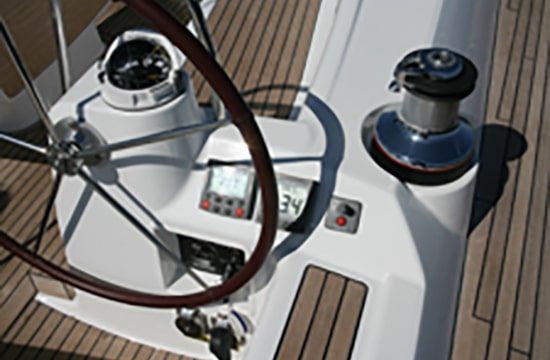Momentum on a Sailboat
While sailboats are primarily powered by wind, the use of an engine (technically your sailboat engine is “auxiliary power”) is crucial for certain maneuvers and situations. All of this begins with understanding the momentum of a sailboat!
What is Momentum?
Momentum, in a sailing context, refers to the force that keeps a sailboat moving. It is the product of the boat’s mass and its velocity (speed). The formula for momentum (p) is:
p = m × v
where:
p represents momentum,
m is the mass of the sailboat,
v is the velocity of the sailboat.
(and don’t worry – we’re not testing you on this formula, but it’s helpful to understand!)
You typically don’t control the mass m of the sailboat very much – technically you can by controlling the amount of “stuff” and “people” on the boat, but the sailboat mass usually ‘is what it is’ (unless you’re racing and trimming weight to win).
However, you certainly control the velocity v of the sailboat by managing the boat’s speed through gear and throttle controls.
Remember in high school when we learned Newton’s First Law of Motion?Refresher: an object at rest stays at rest and an object in motion stays in motion with the same speed and in the same direction unless acted upon by an unbalanced force. Here is an example of Newton’s law and momentum in sailing: the mass of a typical 30 ft keelboat is about 8,000 to 10,000 pounds ‘displacement’. When docking by Newton’s First Law of Motion and using the momentum formula: that’s about 10,000 lbs of sailboat mass m in motion v that p REALLY DOESN’T WANT TO STOP (i.e., Newton) without an unbalanced force – which is either hitting the dock, shore, another boat, or using your engine!!! No math is required to figure out this practical lesson, you either hit something or use your engine. The lesson is that sailboats often have more mass than most people realize, and so momentum becomes a key factor when maneuvering. Preferably, we use our engines and maneuver appropriately, and when in doubt take it slow (thus the saying “Slow is Pro”)! |
What affects your momentum?
For now, we’re focused on how your engine affects your momentum and control. But… there are plenty of other counterbalancing forces affecting your momentum that we’ll discuss more in later modules:
- Wind and current: going against or with the wind and current certainly affects your momentum in that direction, either increasing or decreasing your momentum.
- Sailboat Design: too many variables to discuss, but essentially “displacement” hulls are meant to move THROUGH the water while higher performance “planing” hulls are designed to move more on TOP of the water. Also, longer sailboats typically can carry more momentum due to the physics of the longer waterline. Or, even keel design – for example, there are “full” keels that run the length of the boat versus “fin” keels that are shorter and deeper. All of this can affect the momentum of a sailboat.
- And more! The point here is “know your boat” – there are many factors that contribute to a boat’s performance and momentum.
The Role of Momentum when Maneuvering Under Power:
- Inertia and Engine Power: A sailboat’s inertia, or resistance to changes in motion, is directly related to its mass. When using the engine, a boat with greater inertia will require more power to start moving and more time and distance to stop.
- Acceleration and Deceleration: Engine power allows for controlled acceleration and deceleration. Smooth throttle adjustments are key to managing the boat’s momentum.
- Steering and Direction Changes: The boat’s momentum affects how it responds to steering inputs. When making turns or changes in direction, the boat’s existing momentum must be considered to execute smooth and effective maneuvers.
Best Practices for Managing Momentum:
- Regular Practice: Spend time practicing maneuvers with the engine to become familiar with how your boat responds to throttle inputs. Practice docking, turning, and stopping in various conditions to build confidence and skill.
- Smooth Throttle Use: Always use the throttle smoothly to avoid sudden changes in momentum.
- Plan Ahead: Anticipate your next move and start adjusting the throttle well in advance. Whether you’re docking, stopping, or making a turn, planning ahead allows you to manage the boat’s momentum more effectively.
- Communication with Crew: Ensure clear and concise communication with your crew about your intentions and upcoming maneuvers. This coordination is especially important when managing the boat’s momentum during complex maneuvering.






